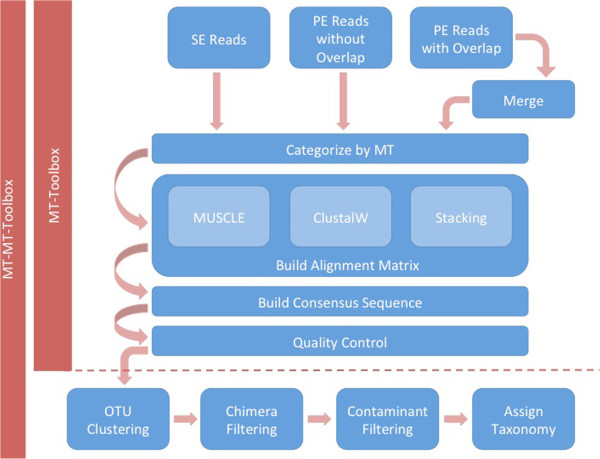Figure 1.

MT-Toolbox overview. Single-end or paired-end (overlapping or non-overlapping) reads can be input into MT-Toolbox. Overlapping paired-end reads are merged after which all reads, regardless of their type, are categorized by their MT. Next a square alignment matrix is created for each MT category using either an MSA algorithm (e.g. ClustalW, MUSCLE) or by read stacking. From these matrices, ConSeqs are built and quality control measures remove low-quality ConSeqs. When using the MT-MT-Toolbox plugin, ConSeqs are subjected to traditional 16S profiling analyses including OTU clustering, chimera filtering, contaminant filtering, and assigning taxonomy.
